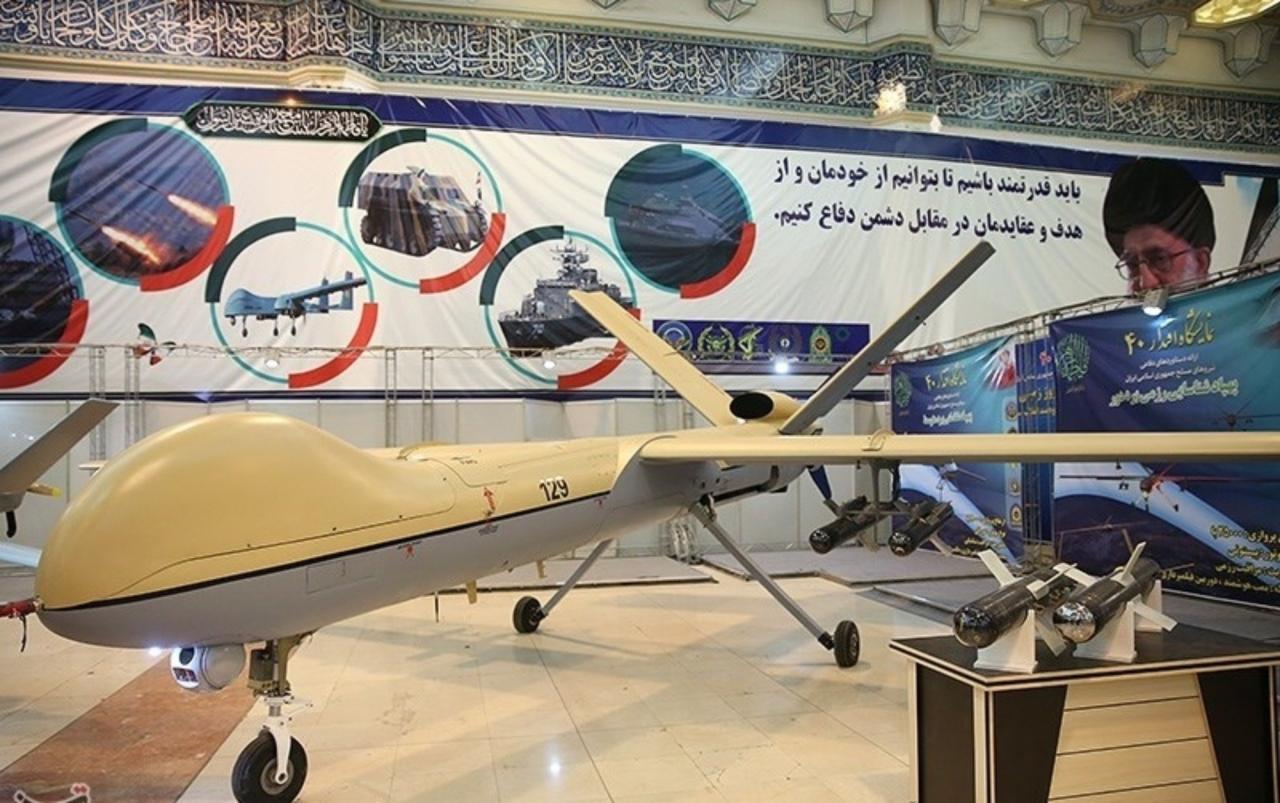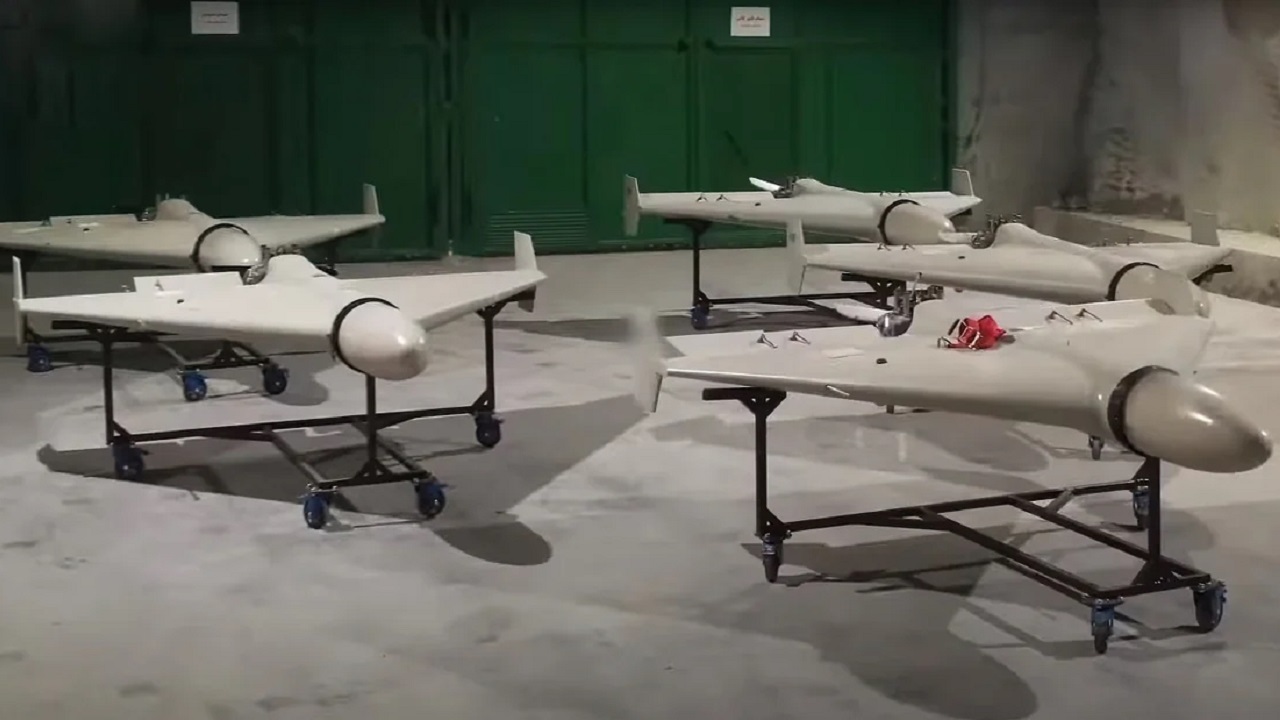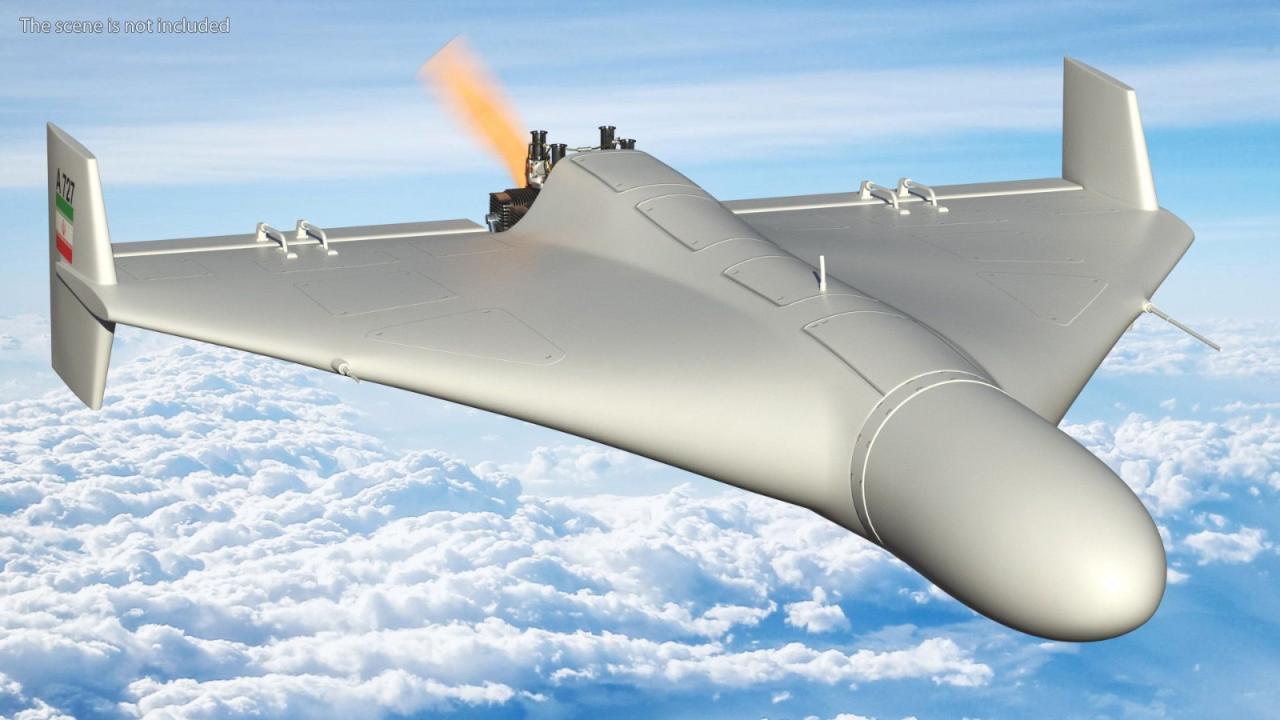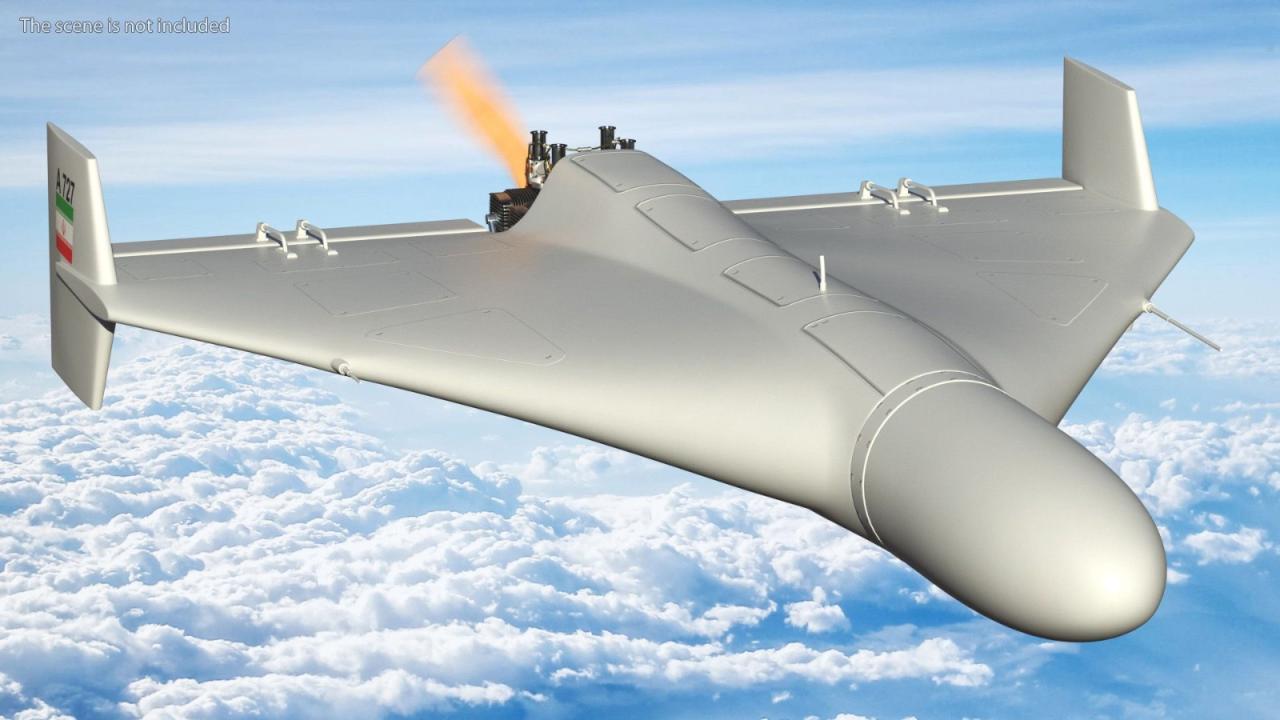Shahed drones have emerged as a significant factor in modern warfare and geopolitical dynamics. Their relatively low cost, ease of production, and surprising effectiveness have made them a potent tool, sparking debate about their impact on conflict and international security. This exploration delves into the technical specifications, operational capabilities, countermeasures, and broader implications of these unmanned aerial vehicles, offering a detailed examination of their design, deployment, and consequences.
From their initial deployment to their evolving technological advancements and strategic applications, the Shahed drone presents a multifaceted case study in modern military technology. Understanding its capabilities, limitations, and impact is crucial for navigating the complex landscape of contemporary warfare and international relations. This analysis will provide a thorough and nuanced perspective on this rapidly evolving area.
Shahed Drone Technical Specifications
The Shahed drone family, encompassing various models, presents a diverse range of technical specifications. Understanding these specifications is crucial for analyzing their capabilities and limitations. The following sections detail the physical characteristics, propulsion systems, and flight control systems of these drones.
Physical Dimensions, Weight, and Payload Capacity
Shahed drones are characterized by their relatively small size and lightweight design, contributing to their portability and ease of deployment. Specific dimensions vary across models, with some exhibiting a longer wingspan for increased endurance. Payload capacity is generally limited, restricting the size and weight of the warhead or surveillance equipment they can carry. Construction materials primarily consist of lightweight composites, designed to minimize weight while maintaining structural integrity.
| Model | Wingspan (m) | Length (m) | Weight (kg) | Payload (kg) |
|---|---|---|---|---|
| Shahed-131 | 2.2 | 1.6 | 20 | 10 |
| Shahed-136 | 2.5 | 1.8 | 25 | 15 |
| Shahed-191 | 3.5 | 2.2 | 35 | 20 |
Propulsion System
The propulsion system of Shahed drones is a key factor determining their range and endurance. These drones typically employ a small, lightweight internal combustion engine, which offers a balance of power and fuel efficiency. Fuel capacity directly influences flight duration and operational range. The specific type of engine and fuel used can vary between models.
Flight Control System, Sensors, and Navigation
Shahed drones utilize a relatively simple but effective flight control system, relying on inertial navigation and GPS for guidance. While lacking advanced autonomous features found in more sophisticated UAVs, this system provides sufficient accuracy for their intended missions. Sensors, such as cameras, may be incorporated for reconnaissance or targeting purposes. The level of sensor sophistication varies based on the specific model and mission requirements.
Shahed Drone Operational Capabilities
The operational capabilities of Shahed drones are defined by their deployment methods, mission profiles, and effectiveness in diverse environments. Their low cost and ease of use contribute to their widespread adoption.
Deployment Methods and Tactics, Shahed drone
Shahed drones are typically launched from simple ground-based systems, requiring minimal infrastructure. This ease of deployment enables their use in various operational theaters. Tactics often involve swarming attacks, leveraging numbers to overwhelm defenses. Their low-altitude flight profiles enhance their survivability against certain detection systems.
Mission Profiles

Shahed drones are primarily employed for reconnaissance, surveillance, and attack missions. Their limited payload capacity restricts the scale of their offensive capabilities. Reconnaissance missions leverage their onboard cameras to gather intelligence, while attack missions involve delivering small warheads against targets.
Effectiveness in Different Environments
The effectiveness of Shahed drones can vary depending on the operational environment. Urban environments present challenges due to obstacles and potential interference, while open areas offer greater operational freedom. Maritime environments present unique challenges related to navigation and communication.
Shahed Drone Countermeasures
Numerous countermeasures have been developed to address the threat posed by Shahed drones. A multi-layered approach is often most effective.
Methods for Detection and Neutralization
- Electronic Warfare Systems: Jamming signals to disrupt drone navigation and control.
- Radar Systems: Detecting drones through radar signatures.
- Directed Energy Weapons: Using lasers or other directed energy to disable or destroy drones.
- Anti-drone Guns: Employing kinetic energy weapons to shoot down drones.
- Cyber Warfare: Hacking into drone systems to disable or redirect them.
Effectiveness of Countermeasures
The effectiveness of each countermeasure depends on various factors, including the specific drone model, environmental conditions, and the sophistication of the countermeasure system. A combination of countermeasures is often necessary to maximize effectiveness.
Hypothetical Countermeasure System
An ideal countermeasure system would integrate radar detection, electronic warfare jamming, and directed energy weapons. The synergistic effect of these technologies would provide a robust defense against Shahed drone attacks. Radar would detect incoming drones, electronic warfare would disrupt their control systems, and directed energy weapons would neutralize the threat.
Shahed Drone Impact and Implications

The proliferation of Shahed drones has significant geopolitical implications, altering military strategies and power dynamics. Their relatively low cost and ease of use have democratized access to military-grade technology.
Geopolitical Implications
The widespread use of Shahed drones has raised concerns about the potential for escalation of conflicts and the spread of advanced weaponry to non-state actors. The ease of acquisition and deployment makes these drones a significant threat to national security.
Impact on Military Strategies
The effectiveness of Shahed drones in various conflicts has forced militaries to adapt their defense strategies. Emphasis is being placed on developing effective countermeasures and improving air defense systems.
Timeline of Shahed Drone Evolution
The Shahed drone program has undergone continuous development and refinement. Early models were less sophisticated, but newer versions demonstrate improvements in range, payload capacity, and survivability. This continuous evolution presents a persistent challenge to countermeasure development.
Shahed Drone Manufacturing and Supply Chain
Understanding the manufacturing process and supply chain of Shahed drones is crucial for assessing their production capabilities and potential for proliferation. The simplicity of their design facilitates relatively low-cost mass production.
The Shahed drone’s relatively low cost and ease of use have made it a significant factor in recent conflicts. Understanding its operational range and limitations often requires assessing environmental conditions, which is where a resource like the coquihalla weather camera could provide valuable data in a similar, albeit geographically distinct, context. Such real-time weather information could influence deployment strategies for drones like the Shahed.
Manufacturing Process
The manufacturing process is characterized by its relative simplicity and reliance on readily available components. This allows for rapid production and minimizes reliance on highly specialized manufacturing facilities. Key components are sourced from various domestic and international suppliers.
Countries and Entities Involved
Iran is the primary manufacturer and exporter of Shahed drones. However, the supply chain involves various countries and entities that contribute components or provide logistical support. This complex network enhances the resilience of the production process.
Economic and Technological Implications
The low cost of Shahed drones has significant economic implications, making them accessible to a wider range of actors. The technological advancements demonstrated by these drones are driving further developments in UAV technology.
Shahed Drone vs. Other UAVs
Comparing Shahed drones with other UAVs reveals their unique strengths and weaknesses in terms of capabilities, cost-effectiveness, and operational strategies. This comparison highlights their position within the broader UAV landscape.
Comparison Table
| Feature | Shahed Drone | Other UAV (Example: Bayraktar TB2) | Other UAV (Example: Switchblade 300) |
|---|---|---|---|
| Cost | Low | Medium | High |
| Range | Medium | High | Low |
| Payload | Low | Medium | Low |
| Precision | Low | Medium | High |
Design Philosophy and Operational Strategies
Shahed drones emphasize affordability and ease of deployment over advanced capabilities. In contrast, other UAVs may prioritize precision, range, or autonomous features. These differing design philosophies lead to distinct operational strategies.
Advantages and Disadvantages in Combat Scenarios

Shahed drones excel in scenarios requiring a high volume of low-cost attacks. However, their limited precision and susceptibility to countermeasures pose significant limitations in more sophisticated combat scenarios. The advantages and disadvantages are heavily context-dependent.
Shahed Drone Imagery and Visual Representation
Visual identification of Shahed drones is crucial for effective countermeasures. Understanding their appearance and flight characteristics is essential for rapid identification and response.
Typical Drone Image Description
A Shahed drone typically appears as a relatively small, slender, unmanned aerial vehicle with a long, narrow fuselage and relatively small wings. The color is usually muted, often a light gray or tan, designed for camouflage. The materials used give it a relatively smooth, non-reflective surface. Distinguishing features may include the engine exhaust and the shape of the tail assembly.
Visual Representation in Flight
In flight, Shahed drones generally maintain a relatively low altitude and a somewhat erratic flight path, potentially as a means of evading detection. The visible components include the wings, fuselage, and occasionally the engine exhaust. The drone’s speed and maneuverability are relatively modest.
Visual Identification
Visual identification relies on a combination of factors including size, shape, color, and flight characteristics. Recognizing these features is crucial for early detection and effective response. Familiarity with high-resolution imagery and video footage of Shahed drones enhances identification capabilities.
In conclusion, the Shahed drone represents a paradigm shift in asymmetric warfare, challenging traditional military doctrines and demanding innovative countermeasures. Its proliferation underscores the evolving nature of conflict and the need for a comprehensive understanding of its technological, strategic, and geopolitical implications. Further research and development of effective countermeasures, alongside international cooperation to curb the irresponsible proliferation of such weapons, are essential for mitigating the risks associated with this increasingly prevalent technology.
Popular Questions
What is the typical lifespan of a Shahed drone?
The lifespan varies depending on usage and maintenance, but it’s generally considered to be relatively short, often measured in missions rather than years.
How accurate are Shahed drones in targeting?
The Shahed drone, known for its relatively inexpensive design and ease of mass production, has garnered significant attention. Its capabilities, however, are often compared to more sophisticated models, such as those found when researching drone with camera options for professional applications. Understanding the technological differences between these types of drones helps to contextualize the Shahed drone’s impact on modern warfare and surveillance.
Their accuracy is debated and varies depending on factors like weather conditions and operator skill. Generally, they are considered less precise than more advanced UAVs.
What are the ethical implications of Shahed drone use?
The use of Shahed drones raises significant ethical concerns, including civilian casualties and the potential for escalation of conflicts.
Are Shahed drones easily repairable in the field?
Reports suggest they are relatively simple to repair, contributing to their effectiveness in areas with limited logistical support.
